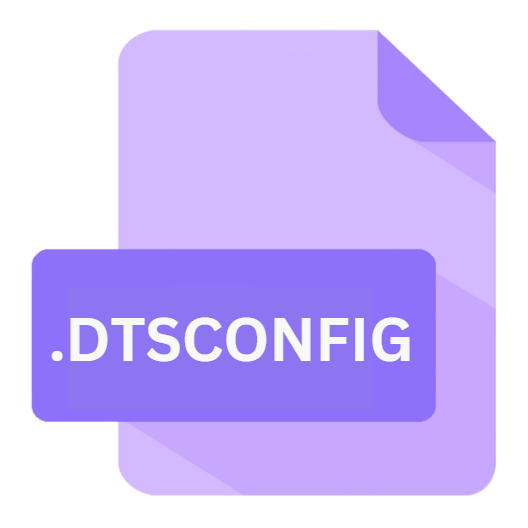.DTSCONFIG File Extension

SSIS Package Configuration File
| Developer | Microsoft |
| Popularity | |
| Category | Settings Files |
| Format | .DTSCONFIG |
| Cross Platform | Update Soon |
What is an DTSCONFIG file?
The .DTSCONFIG file extension is associated with SQL Server Integration Services (SSIS), a component of Microsoft SQL Server used for data integration and workflow applications.
Specifically, .DTSCONFIG files are configuration files used by SSIS packages to manage settings and parameters that define how packages should run and interact with data sources.
These files are crucial for customizing and controlling the execution of SSIS packages in various environments.
More Information.
The primary purpose of .DTSCONFIG files is to store configuration settings that control the behavior of SSIS packages.
When SSIS packages are deployed to different environments, such as development, testing, or production, the configuration settings may need to change.
The .DTSCONFIG file allows these settings to be externalized from the package itself, making it easier to manage and modify configurations without altering the package’s core logic.
Initially, .DTSCONFIG files were designed to simplify the management of package settings across different environments and improve the maintainability of data integration solutions.
By storing configuration settings in separate files, SSIS enables users to update or adjust settings without having to redesign or redeploy the entire package.
Origin Of This File.
The .DTSCONFIG file format originated from Microsoft SQL Server, which includes SSIS as part of its suite of tools.
SSIS was first introduced in SQL Server 2005, replacing the earlier Data Transformation Services (DTS) used in SQL Server 2000.
The .DTSCONFIG file format was developed to handle the configuration settings of SSIS packages, allowing for greater flexibility and control over data integration processes.
File Structure Technical Specification.
.DTSCONFIG files are XML-based configuration files that follow a specific structure to define various settings for SSIS packages. The file contains XML elements that specify properties and values used by the SSIS package during execution.
Key Components of a .DTSCONFIG File:
- Configuration Settings: The file includes settings for connection strings, variable values, and other parameters required by the SSIS package. These settings are often organized into sections corresponding to different components or tasks within the package.
- XML Schema: The structure of a .DTSCONFIG
file adheres to the XML schema defined by SSIS. This schema ensures that the file contains the necessary elements and attributes to properly configure the package. - Variables and Parameters: The file specifies variables and parameters that can be used by the SSIS package. These elements allow users to dynamically set values at runtime, based on the current environment or specific requirements.
- Connection Managers: Configuration for connection managers, which handle connections to data sources, is also included in the .DTSCONFIG file. This ensures that the package can connect to different databases or services as needed.
How to Convert the File?
Converting .DTSCONFIG files to other formats or configurations is not a common practice, as these files are specifically designed for use within the SSIS framework. If conversion is necessary, you might consider the following approaches:
- XML Transformation: Since .DTSCONFIG files are XML-based, you can use XML transformation tools or scripts to convert them into other XML formats or structures. This approach may require custom XSLT (Extensible Stylesheet Language Transformations) scripts.
- Manual Extraction: For simple conversions, you can manually extract the relevant configuration settings from the .DTSCONFIG file and apply them to other formats or systems as needed.
- SSIS Tools: Some SSIS tools or third-party utilities may offer features for exporting or importing configuration settings, which can help in converting or managing .DTSCONFIG files.
Advantages And Disadvantages.
Advantages:
- Flexibility: .DTSCONFIG files provide flexibility by allowing configuration settings to be changed without modifying the SSIS package itself. This separation of configuration from package logic simplifies management and deployment.
- Environment-Specific Settings: Using .DTSCONFIG files, users can easily adjust settings for different environments, such as development, staging, and production. This reduces the risk of errors and ensures that packages operate correctly in each environment.
- Ease of Management: Centralizing configuration settings in .DTSCONFIG files makes it easier to manage and maintain complex SSIS packages. Users can update settings in a single file rather than making changes to multiple packages.
- Version Control: Since .DTSCONFIG files are XML-based, they can be version-controlled using standard version control systems. This helps track changes and maintain a history of configuration updates.
Disadvantages:
- Complexity: The XML structure of .DTSCONFIG files can become complex, especially for large SSIS packages with many settings. This complexity can make it challenging to manually edit or troubleshoot configuration files.
- Potential for Errors: Incorrectly configured .DTSCONFIG files can lead to runtime errors or unexpected behavior in SSIS packages. Ensuring that the file is correctly formatted and contains valid settings is crucial.
- Limited Documentation: Documentation for .DTSCONFIG files may be limited compared to other aspects of SSIS. Users may need to rely on SSIS documentation or community resources for guidance on configuring and using these files.
How to Open DTSCONFIG?
Open In Windows
- Text Editors: Use text editors like Notepad, Notepad++, or Visual Studio Code to open and edit .DTSCONFIG files. These editors can handle XML files effectively.
- XML Editors: Specialized XML editors like Altova XMLSpy or Oxygen XML Editor provide additional features for working with XML files.
Open In Linux
- Text Editors: Use text editors like Nano, Vim, or Gedit to open and edit .DTSCONFIG files.
- XML Editors: Tools like XMLStarlet or the
xmllintcommand-line utility can be used for XML file processing on Linux.
Open In MAC
- Text Editors: Use text editors such as TextEdit, Sublime Text, or Visual Studio Code to open and edit .DTSCONFIG files.
- XML Editors: XML editing tools like Oxygen XML Editor, available for macOS, can be used for more advanced XML file management.












